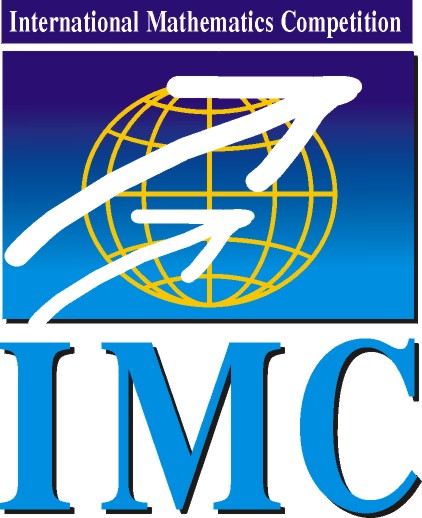
|
International Mathematics Competition
|
IMC 2025 |
| Information | Schedule | Problems & Solutions | Results | Contact |
IMC2021: Day 1, Problem 1
Problem 1. Let \(\displaystyle A\) be a real \(\displaystyle n\times n\) matrix such that \(\displaystyle A^3=0\).
(a) Prove that there is a unique real \(\displaystyle n\times n\) matrix \(\displaystyle X\) that satisfies the equation
\(\displaystyle X+AX+XA^2=A. \)
(b) Express \(\displaystyle X\) in terms of \(\displaystyle A\).
Bekhzod Kurbonboev, Institute of Mathematics, Tashkent
Solution 1. First suppose that some matrix \(\displaystyle X\) satisfies the equation. We can obtain new equations if we multiply the given equation by some power of \(\displaystyle A\) from left and another power of \(\displaystyle A\) from right. For example,
\(\displaystyle A^2(X+AX+XA^2)A^2 = A^2XA^2+A^3\cdot XA^2+A^2XA\cdot A^3 = A^2XA^2. \)
The right-hand side is \(\displaystyle A^2\cdot A\cdot A^2=A^3\cdot A^2=0\), so
$$\begin{align*} A^2XA^2 &= A^2(X+AX+XA^2)A^2 = A^5 = 0. \qquad \text{Similarly,} \\ A^2X &= A^2(X+AX+XA^2) = A^3 = 0 \\ AXA &= A(X+AX+XA^2)A = A^3 = 0 \\ XA^2 &= (X+AX+XA^2)A^2 = A^3 = 0 \\ AX &= A(X+AX+XA^2)A = A^2. \qquad \text{Finally} \\ X &= A-AX-XA^2 = A-A^2. \end{align*}$$Hence, no matrix other than \(\displaystyle A-A^2\) can satisfy the equation.
Note that the argument above does not prove that the matrix \(\displaystyle X=A-A^2\) satisfies the equation, because the steps cannot be done in reverse order. That must be verified separately. Indeed,
\(\displaystyle X+AX+XA^2 =(A-A^2)+A(A-A^2)+(A-A^2)A^2 = A-A^4 = A. \)
Hence, \(\displaystyle X=A-A^2\) is the unique solution of the equation.
By multiplying the equation by \(\displaystyle A^n\) from left and by \(\displaystyle A^k\) from right we can get 9 different equations:
\(\displaystyle \begin{matrix} X+AX+XA^2=A & XA+AXA=A^2 & XA^2+AXA^2=0 \\ AX+A^2X+AXA^2=A^2 & AXA+A^2XA=0 & AXA^2+A^2XA^2=0 \\ A^2X+A^2XA^2=0 & A^2XA=0 & A^2XA^2 =0 \\ \end{matrix} \)
These formulas provide a system of linear equations for the nine matrices \(\displaystyle X\), \(\displaystyle AX\), \(\displaystyle A^2X\), \(\displaystyle XA\), \(\displaystyle AXA\), \(\displaystyle A^2XA\), \(\displaystyle XA^2\), \(\displaystyle AXA^2\) and \(\displaystyle A^2XA^2\).
Solution 2. We use a different approach to express \(\displaystyle X\) in terms of \(\displaystyle A\). If some matrix \(\displaystyle X\) satisfies the equation then
\(\displaystyle X = A-AX-XA^2. \)
Let us substitute this identity in the right-hand side repeatedly until \(\displaystyle X\) cancels out everywhere. Notice that by the condition \(\displaystyle A^3=0\) we have \(\displaystyle A^3=A^4=A^5=A^3X=XA^4=AXA^4=A^3XA^2=0\), \(\displaystyle so
$$\begin{align*} X &= A-AX-XA^2 \\ &= A-A(A-AX-XA^2)-(A-AX-XA^2)A^2 \\ &= A-(A^2-A^2X-AXA^2)-(A^3-AXA^2-XA^4) \\ &= A-A^2 +A^2X +2AXA^2 \\ &= A-A^2 +A^2(A-AX-XA^2) +2A(A-AX-XA^2)A^2 \\ &= A-A^2 +(A^3-A^3X-A^2XA^2) + 2(A^4-A^2XA^2-AXA^4) \\ &= A-A^2 -3A^2XA^2 \\ &= A-A^2 -3A^2(A-AX-XA^2)A^2 \\ &= A-A^2 -3(A^5-A^3XA^2-A^2XA^4) \\ &= A-A^2. \end{align*}$$
To complete the solution, we have to verify that \)X=A-A2\(\displaystyle is indeed a solution. This step is the same as in Solution~1.
Solution 3. Let \(\displaystyle B=I-A+A^2\) so that \(\displaystyle B\) is the inverse of \(\displaystyle I+A\). Multiplying by \(\displaystyle B\) from the left, the equation is equivalent to
| \(\displaystyle X+BXA^2=BA. \) | \(\displaystyle (1) \) |
Now assume \(\displaystyle X\) satisfies the equation. Multiplying by \(\displaystyle A^2\) from the right and using \(\displaystyle A^3=0\) we get \(\displaystyle XA^2=0\). Hence the equation simplifies to \(\displaystyle X=BA=A-A^2\).
On the other hand, \(\displaystyle X=BA\) obviously satisfies (1).
© IMC